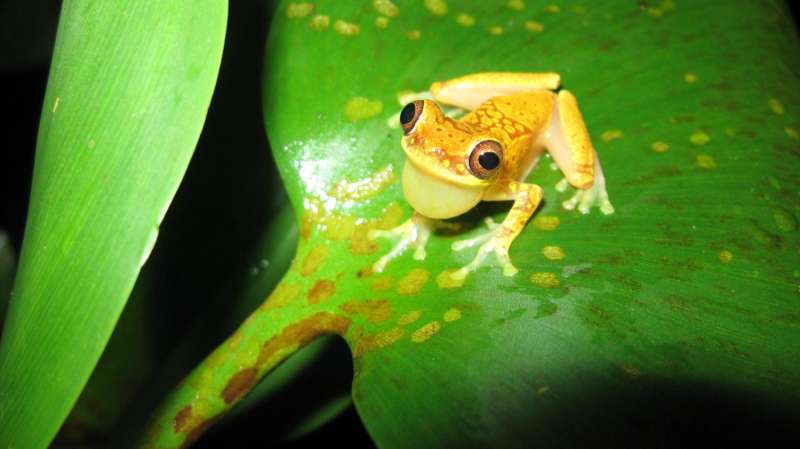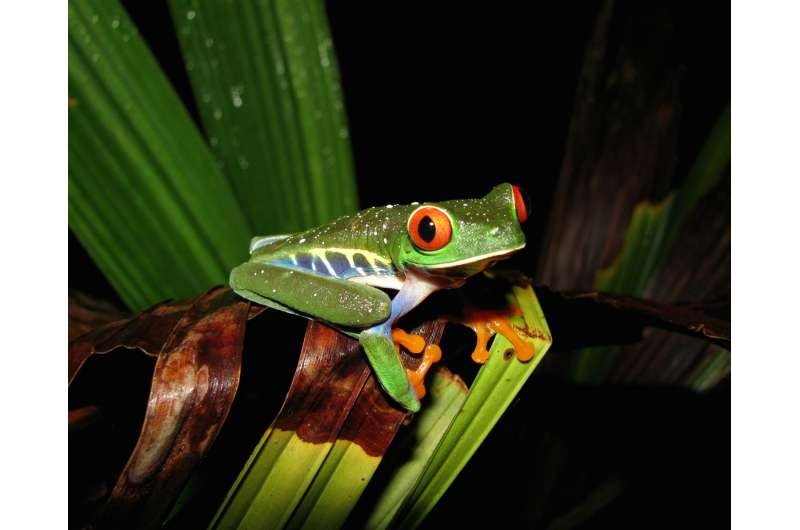Frogs that can take the heat expected to fare better in a changing world

Amphibians that tolerate higher temperatures are likely to fare better in a world affected by climate change, disease and habitat loss, according to two recent studies from the University of California, Davis.
Frogs are disappearing globally, and the studies examine why some survive while others perish. The studies reveal that thermal tolerance—the ability to withstand higher temperatures—may be a key trait in predicting amphibian declines.
Heat-tolerant frogs escape deadly fungus
One of the world's deadliest wildlife pandemics is caused by a fungus, Batrachochytrium dendrobatidis, or Bd. The fungus is linked to several amphibian extinctions and global declines.
A study published online June 24 in the journal Ecology Letters describes how amphibians that can tolerate high temperatures are at lower risk of infection by the fungus. This is likely because Bd grows best in cool environments. Frogs with low thermal tolerances are essentially trapped in the same thermal niche as the fungus, whereas species with high thermal tolerance can escape infection.
"Our study helps us better understand who the 'winners' and 'losers' may be following infection outbreaks and why," said senior author Brian Todd, associate professor of conservation biology in the UC Davis Department of Wildlife, Fish, and Conservation Biology. "Understanding which traits make species susceptible to disease can help us better predict which species will be most affected by new disease outbreaks—outbreaks that may be increasingly common in an age of climate change and pathogen transport facilitated by globalization."

Too hot to handle: climate and deforestation
UC Davis scientists led a separate but related study, published online in June in the journal Conservation Biology, that examined how changing thermal landscapes may alter the amount of habitat suitable for tropical amphibians.
The researchers measured microclimates in six land-cover types in Costa Rica, estimated the core body temperatures of frogs exposed to those microclimates, and projected changes in thermally suitable habitat 80 years into the future.
"Our results show that loss of thermally suitable habitat from climate change may outpace habitat loss expected from forest clearing in Costa Rica," said lead author Justin Nowakowski, a postdoctoral researcher at UC Davis. "Over time, the combined effects of land use and climate change may result in the complete loss of thermally suitable habitat for some species that are most sensitive to temperature increases."

The researchers also found that frog species living exclusively in forests were most sensitive to the high temperatures that come from the combination of climate change and forest conversion.
The study said that in the face of ongoing land-cover and climate change, it is critical to consider changing thermal landscapes in strategies to conserve species, like frogs, whose temperature can depend on that of their environment.
Journal information: Ecology Letters , Conservation Biology
Provided by UC Davis


















